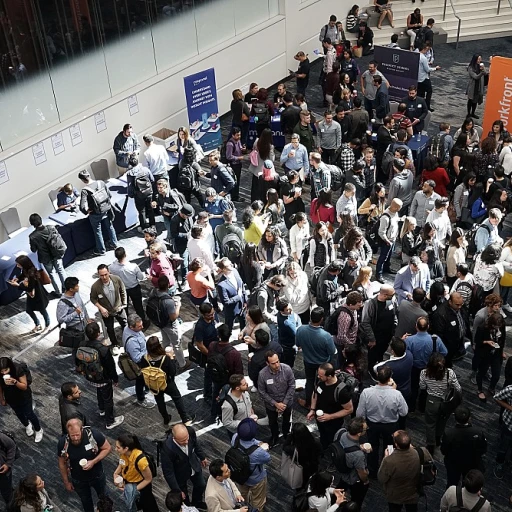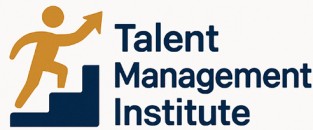
The Early Days of Applicant Tracking Systems
Origins and Initial Capabilities
In the realm of recruitment and talent management, applicant tracking systems, commonly known as ATS, have a storied history that traces back to the late 1990s. During these formative years, organizations began leveraging ATS platforms as a necessity to streamline the cumbersome recruitment process. Initially, these systems were rudimentary, focusing primarily on the basic functions of data collection and resume parsing. Recruiters were mainly reliant on manual input, which required extensive management and technical oversight. The early applicant tracking solutions served as a digital warehouse, storing resumes and candidate profiles in a single database. Yet, the user experience for both recruiters and candidates left much to be desired, as these platforms often lacked the intuitive interfaces and customization we find today. Operational and hiring managers began to notice that these early systems, although innovative at the time, were primarily designed for storage rather than strategic decision-making. From a candidate experience perspective, early ATS software was less accommodating, often neglecting the usability aspect, inadvertently deterring top talent from applying due to complex submission processes. Despite these limitations, these systems succeeded in planting the seeds for future technological advancements in recruiting and hiring processes. As we explore the evolution further, technological advancements powered by data analytics, social media integration, and artificial intelligence have dramatically reshaped ATS capabilities, as highlighted in other sections. This transformation has led to more integrated recruiting strategies, aligning better with modern human resource management practices. The enhanced understanding of these systems reveals much about their journey from their rudimentary origins to becoming critical components in today’s talent acquisition landscape.Technological Advancements and Their Impact
Modernization of Technology and Recruitment Processes
The world of recruitment has seen a significant transformation with the arrival of new technological advancements. These advancements have not only reshaped applicant tracking (ATS) platforms but also the overall recruitment process. This section will explore how technology has impacted the recruitment landscape, leading to more efficient and data-driven decision-making. Candidate experience and the job application process have been enhanced greatly by these technological advancements. ATS software now incorporates resume parsing, allowing the system to automatically extract key information from resumes, which streamlines the job candidate assessment process. Recruiters can focus more on connecting with top talent and less on administrative tasks, resulting in a more efficient hiring process. Artificial intelligence (AI) has also played a crucial role in enhancing ATS systems. AI capabilities allow for better candidate matching and improved applicant management by analyzing large volumes of data to predict which candidates are most likely to be successful in a given role. Furthermore, ats solutions now offer integration with job boards and social media, broadening the reach to potential candidates and making recruitment more dynamic and inclusive. The integration of ATS systems with advanced data analytics has empowered recruiters to make informed decisions and refine their recruitment strategies. By leveraging data-driven insights, hiring managers can adapt their approach to suit the evolving needs of the job market and ensure a positive candidate experience. One can explore further the benefits of modern technological advancements in recruitment systems in our related resource on enhancing workforce potential. The ATS platforms of today, equipped with cutting-edge tools and features, have redefined the recruitment and hiring landscape. As technology continues to evolve, ATS solutions will undoubtedly become even more integral to effective talent acquisition and management.Integration with Other HR Tools
Enhancing Efficiency through Integration
The evolution of applicant tracking systems (ATS) is not only marked by technological advancements but also by their seamless integration with other human resources tools. This development has had a significant impact on the recruitment process as a whole. By linking ATS platforms with various HR solutions, organizations have streamlined the hiring process, reducing the time spent on administrative tasks and improving overall efficiency. The integration of recruitment tools enables a more fluid exchange of data between systems, allowing recruiters to easily access relevant candidate information. This means that whether using ATS software for resume parsing or leveraging social media platforms for sourcing candidates, the process is significantly faster and more efficient. Moreover, a comprehensive data-driven approach to talent acquisition encourages better decision-making by providing recruiters with valuable insights. This interconnectedness enhances the candidate experience by ensuring smoother transitions through various stages of the recruitment journey. By incorporating features like automated communication and interview scheduling, these systems ats reduce bottlenecks and enhance the management of candidate interactions. Additionally, the incorporation of artificial intelligence in ATS solutions paves the way for advanced functionalities such as predictive analytics, which can forecast candidate-job fit more accurately. This integration contributes to identifying top talent, thus ensuring that the best candidates are not lost in the recruitment process. In summary, by bridging the gap between various HR tools, applicant tracking systems have transformed into comprehensive solutions that enhance the recruiting process end-to-end, from talent acquisition to candidate management. For those interested in exploring more about the possible trajectories in talent management, the future of talent management offers fascinating insights into upcoming trends and challenges.User Experience and Customization
Enhancing the User Journey through Personalization
In recent years, the evolution of applicant tracking systems (ATS) has placed a significant emphasis on user experience and customization. This transformation in the hiring process has been chiefly driven by the need for ATS software to cater to diverse recruitment demands across industries. A primary focus of modern ATS platforms is to improve the candidate experience by offering a more tailored and seamless interaction. Here’s how they are achieving this:- Customizable Dashboards: ATS platforms now offer user-friendly interfaces where both recruiters and candidates can personalize their portals. Customizable dashboards enhance visibility into the recruitment process, allowing talent managers to track their progress efficiently.
- Integration with Social Media: As the recruitment process becomes more intertwined with digital platforms, ATS solutions integrate seamlessly with various social media networks. This integration not only expands the reach for top talent but also enables easier sharing of job postings and allows candidates to apply using their social media profiles.
- Artificial Intelligence for Personalization: Leveraging AI, applicant tracking systems can now parse resumes more intelligently, offering insights and recommendations that match candidates with suitable positions. This data-driven approach ensures that recruiters have better precision in identifying the right fit for the job.
- Responsive Design: Recognizing the growing trend of mobile job applications, ATS software adapts to multiple devices, facilitating an accessible experience for both candidates and recruiters. Responsive designs ensure that all functionalities are retained, regardless of whether the system is accessed on a desktop, tablet, or smartphone.
Data Analytics and Decision-Making
Leveraging Data for Strategic Decision-Making
In the evolving landscape of applicant tracking systems (ATS), data analytics plays a crucial role in enhancing the recruitment process. As these systems have developed, the ability to harness data has become indispensable for recruiters aiming to make informed decisions. ATS platforms today are equipped with sophisticated data-driven tools that provide insights into various dimensions of the hiring process. By utilizing these capabilities, recruiters can track the effectiveness of their recruitment strategies and refine them to attract top talent efficiently. Here are some key areas where data analytics enhances decision-making:- Candidate Sourcing: With access to data from job boards and social media platforms, ATS software identifies which sources yield the most successful candidates. This aids recruiters in optimizing their candidate sourcing strategies.
- Time-to-Fill Metrics: By analyzing historical data, tracking systems can predict the average time required to fill certain job positions. Such insights help in setting realistic timelines and managing talent acquisition expectations.
- Resume Parsing and Filtering: ATS systems use sophisticated algorithms to parse resumes and rank candidates based on their qualifications and experience. This ensures a more streamlined hiring process by reducing time spent on initial candidate screening.
- Candidate Experience: Evaluating applicant feedback can help refine the application process, ensuring a smooth user experience that enhances the brand's reputation as an employer.
- Predictive Analytics: Advanced ATS solutions incorporate artificial intelligence to forecast future hiring outcomes based on patterns in current and past data. This proactivity leads to strategic recruitment planning and talent management.
Future Trends in Applicant Tracking Systems
Anticipating the Next Wave of Innovation
As we peer into the horizon of applicant tracking systems (ATS), it's clear that the evolution will continue to be shaped by technological advancements and integrated processes. Modern ATS solutions are already leveraging artificial intelligence (AI) and data analytics to refine the recruitment process by efficiently identifying top talent. The coming trends promise even more sophisticated features that will enhance recruiter efficiency and candidate experience.
One such trend is the increased integration of social media platforms within ATS systems, allowing recruiters to reach a broader pool of candidates and create a seamless job application process. This trend aligns with the current shift towards a more candidate-centered approach, where job seekers expect streamlined interactions when applying for positions.
AI will continue to play a pivotal role, not only in automating resume parsing but also in personalizing the engagement with candidates. Smart algorithms can assess a candidate's fit based on more than just keywords, considering their overall experience and potential for growth, thereby enhancing decision-making processes.
Data-driven insights will be further emphasized, equipping recruiters and HR professionals with actionable intelligence to make informed choices regarding talent acquisition and management. This approach will support a more strategic deployment of resources, ensuring that recruiting efforts are tailored to attract the right candidates efficiently.
Finally, the user experience remains at the center of ATS innovation. Customization and ease of use continue to be priorities, with systems being developed to adapt flexibly to the unique needs of each organization. The focus on delivering an intuitive experience will ensure that ATS platforms can accommodate the dynamic nature of modern recruitment needs.
As ATS software evolves, organizations that remain adaptable and leverage new tools effectively will be positioned to capitalize on these advancements, enhancing their competitive edge in the pursuit of top talent.


-large-teaser.webp)









